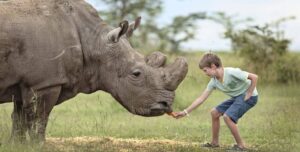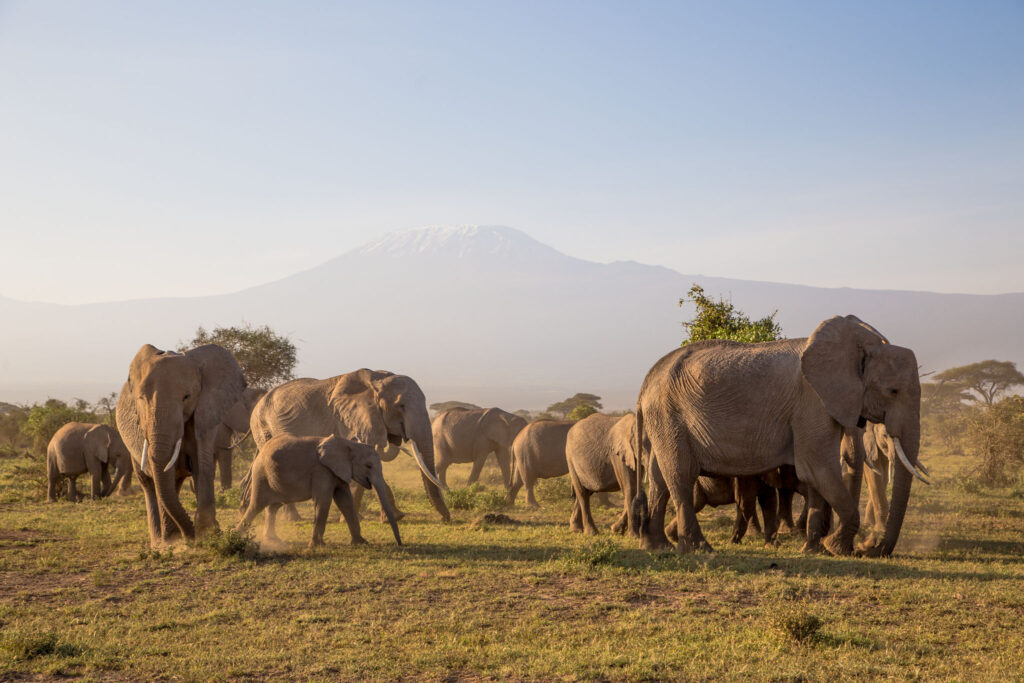Kenya Wildlife & Natural Resources
Kenya is a popular safari destination for tourists from all over the world. The “Big Five” (lion, elephant, rhinoceros, African buffalo, and leopard) are only some of the many wildlife species encountered while on a Kenya safari. The phrase “Big Five” was created by hunters to describe the five most deadly and sought-after animals. Thankfully, hunting has now stopped, and Kenya has embraced conservation efforts, which has seen most wildlife species recover from previous danger of depletion.
Kenya Wildlife
Kenya has gained international attention because of the Wildebeest Migration – eight wonders of the world where millions of Wildebeest and Zebra migrate from the Maasai Mara Reserve to the Serengeti in search of greener pastures. About 1.3 million wildebeest, 200,000 zebras, and 18,000 antelopes undertake the trek each year. More than 250,000 wildebeest perish every year on their migration routes or in the Mara River due to various causes, including drowning, exhaustion, predation, and accidents. Nearly 400,000 calves are born annually despite this severe decline. The Mara River is one of the most incredible spots to see the Great Migration.


Kenya is also home to zebras, wildebeest, waterbucks, gazelles, impalas, antelope, and the endangered Maasai giraffe. The cheetah, the serval, the civet, and the caracal are all examples of big cats. In addition to the colobus, vervet, golden, olive, and yellow baboons, there are many more primates. The ostrich, the most enormous living bird, and the smallest, the sunbird, are just two of the more than 1,135 bird species that call this nation home. The antlion, elephant shrew, rhinoceros beetle, buffalo weaver, and leopard tortoise are the “Little Five” animals found in Kenya.
Nature
Kenya is home to three National Parks recognized as World Heritage Sites: Mount Kenya, Mijikenda Kaya Forests, and Lake Turkana. UNESCO included them all on their list.
In addition to the country’s eight World Heritage Sites, Kenya has over fifty national parks and reserves covering more than 17,000 square miles. Forests, marshes, savannahs, the ocean, and dry and semi-arid environments are all included in this category. There are 23 terrestrial national parks, 28 terrestrial national reserves, four marine national parks, six marine national reserves, and four national sanctuaries. While national parks prohibit all human activity except for tourism and scientific study, national wildlife and private conservancies may permit limited human activity under particular restrictions (such as fishing in a marine reserve).
Outside of Kenya’s national parks and reserves, access to wildlife is via Kenya Wildlife Services (KWS), which operates over a hundred field stations and outposts. However, most of Kenya’s wildlife resides outside of these mostly unfenced protected regions, highlighting their significance. Animals come and go throughout the year for fresh water and pasture. When wild animals come into contact with humans on public or privately owned territory, it may lead to conflict.
KWS works with local communities to reduce these incidents by raising awareness about the negative impacts of human-wildlife conflict and how to avoid it in the future. The primary objectives of the KWS are to increase animal and tourist safety, reduce human-wildlife conflicts, aid local conservation efforts, and conduct research.
.

